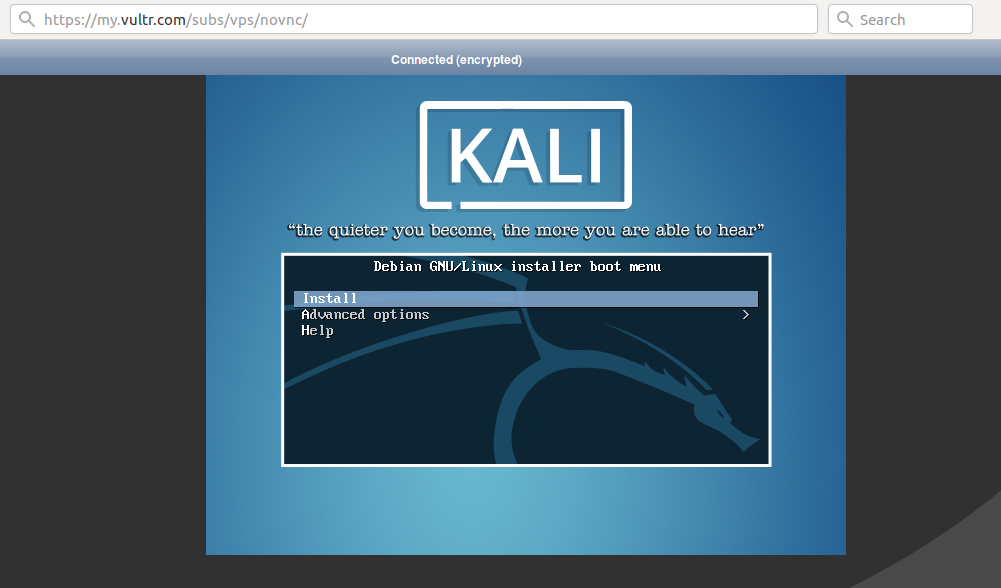

- #Kali linux install install
- #Kali linux install archive
- #Kali linux install portable
- #Kali linux install software
- #Kali linux install Pc
#Kali linux install archive
Kali Linux is 100% FREE and is distributed online as a 4GB ISO archive that can run on any modern PC, starting with ancient i386 all up to modern PCs, laptops, Chromebooks, Raspberry Pi, Galaxy Note smartphones, and many other supported devices. In the latest version, initial support for auditing security for Apple Silicon (Apple M1) devices via Kali ARM service. Some of the most commonly used security audit packages found in Kali Linux are nmap (a port scanner), Burp suite and OWASP ZAP (app security scanners), Aircrack-ng (for testing wireless networks), John the Ripper (password cracker), Wireshark (a network packet analyzer), Airgeddon (wireless networks audit app), Metasploit Framework, Arjun, DNSGen, Shellshock, Wget, Chiselm, GitLeaks, DumpsterDiver, HTTProbe, PSKracker, Bluesniff, and many others. The development of this security Linux repo platform was done in a completely secure environment, with an intention to keep the entire development team small to reduce data leaks or security exploits. While BackTrack was based on Ubuntu, Kali Linux is built on top of Debian Wheezy, with most packages being imported from Debian repositories. Kali Linux was originally developed in 2013 by the small team of Mati Aharoni, Devon Kearns, and Raphaël Hertzog of Offensive Security who were previously responsible for the creation of the similarly security-themed Linux distribution package BackTrack. Of course, it can also be run as a virtual machine.
#Kali linux install Pc
To enable the easier deployment, Kali Linux 64bit can be installed directly on target PC hard drives, or run live from bootable CDs and USB sticks.
#Kali linux install software
Built from the ground up to cater to the needs of advanced programmers, network specialists, and security auditors, this Linux distributions comes with over 600 penetration-testing programs that can immediately be used for testing network defenses, security measures, malicious software detection systems, and proprietary data protection platforms present on networks of all sizes. In this way, you can use the Kali where ever you want without actually installing it on the system.Kali Linux is an advanced version of Linux that is optimized from the ground up for penetration testing, ethical hacking, and network security assessments. Once done, plug out the USB drive and insert to PC or laptop, boot it with Kali installed USB drive instead of the internal hard disk. Wait, until the installation gets completed. Now, just select ” Finish partitioning and write changes to disk”.įinally, again select “ Yes” to let the system write the changes done to the USB drive.

The setup will automatically create primary and swap partition.

Next, Select “ All fines in one portion (recommended for new users)” this will create a single portion of the USB disk with all the necessary files that we need to operate Kali Linux. Therefore, select the empty USB disk that you want to use.
#Kali linux install portable
You will see all the drives present on your system including the two USB disk – one which is working as an Installation medium and the other one that you want to use as a portable Kali Linux drive.
#Kali linux install install
Step 6: Select USB disk drive to install KaliĪlthough you can manually partition your USB disk drive, however, if you are new to Linux, I recommend you to go for the “ Guided-use entire disk” option. Follow the guided installation wizard until you get the Disk Partition section. To help the system to set your time zone properly, select the location where you reside currently, and then continue forward. Select the desired one and then click on the Continue button. The first thing it will ask you to do is Choose the Language for the OS. However, the common ones are Esc, F7, or F12.Īs the Kali Boot Menu appears select the “ Graphical Install”. The key to open the Boot menu could be different according to your Motherboard. Reboot your system and open the boot menu and select the installation medium created in step 2 of this tutorial. Now, the USB drive you have created in the above step, insert that into the PC as well as the main USB (15 or 32 GB) where you want to install the Kali.

Step 3: Boot PC with Kali USB Bootable medium Therefore, download BlaneEtcher to create a bootable drive on Windows, Linux, and macOS for Kali. however, as DVD discs are absolute now, thus the same has been shifted to USB drives. Earlier we were using CD/DVD to create a Linux installation medium.


 0 kommentar(er)
0 kommentar(er)
